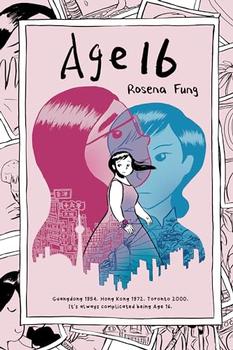Book Club Discussion Questions
In a book club? Subscribe to our Book Club Newsletter!
For supplemental discussion material see our Beyond the Book article, How Mothers Affect Daughters' Body Image and our BookBrowse Review of Age 16.
Please be aware that this discussion guide will contain spoilers!
- Age 16 can be described as a generational story. What do you think this means and how does it enhance the relationships and themes of the graphic novel?
- The women in each generation face daunting moments at age 16: pregnancy, single parenthood, traveling solo to foreign countries, and dealing with the desire to fit in in a weight-and-beauty-obsessed culture. What are the similarities and differences comparing these to current teenage moments?
- Flashback moments show up in black-and-white and muted tones. How do these moments help the reader enhance readers' understanding of a character?
- Why is prom an important rite of passage for teens? Why do you think it's so important for the characters in the story? Are there any other important moments, or rites of passage, that show up in the story?
- Words carry great meaning. The mothers make underhanded comments to their children throughout the book (getting a man, being married, losing weight). What effect do these comments have on the mental health of the sixteen-year-olds?
- In 1954, Mei Laan needs to leave her home, move away and get married; in 1972, Lydia is hoping to move away and start again; and in 2000, Roz wants to find connection with friends. How does Rosena Fung show the evolution of women's roles through the years? What has changed and what has stayed the same in terms of relationships, identity, status, and connections to their cultural community?
- How do the arts (music, dance, and photography) influence each of the women?
- What are the different ways that mothers show care throughout the book, depending on the different time and physical spaces they live in?
- Why do you think it is important for this story to be set in three different times in history? How might this story be different if it were set in the present day?
- Which time period is your favorite storyline in the graphic novel?
- How does the theme of acceptance weave throughout the stories in the different time periods? How might this story look in the present day?
- The author focuses on the perspectives of the three women in this book. Is there another character's perspective in the story that you'd be interested in reading from?
- The author's style includes using color palettes (orange, blue, and purple tones) to show the different times in history in graphic novel format. Why do you think she chose these colors?
--- How do each of these colors represent time, place, and a person?
--- Fung gives space for each woman to have a separate identity in these three tones. How do the colors work separately for each character?
--- As the story moves forward, the colors start to mix and mingle with each other. What was your reaction when you saw the colors come together for the end of the story? Why do you think the author chose prom as the moment?
--- How does Fung shift and change the style of the characters to reflect their time in history?
--- Rosena Fung also uses mirrors throughout the story to reflect the women. What do you notice about the use of the mirrors?
--- Are you able to spot and list the different pop cultural influences throughout the book? (Take a close look at the magazines, posters, music bands, and the clothing.) - The term "inheritance" is usually a term associated with property being passed down. However, how does Fung explore inheritance through the themes of empathy, trauma, and self-worth?
- Friends, or chosen family, however one looks at it, play a factor in each woman's life. How do these relationships uplift, support, and change each woman's experiences at the age of 16?
Unless otherwise stated, this discussion guide is reprinted with the permission of Annick Press.
Any page references refer to a USA edition of the book, usually the trade paperback version, and may vary in other editions.
